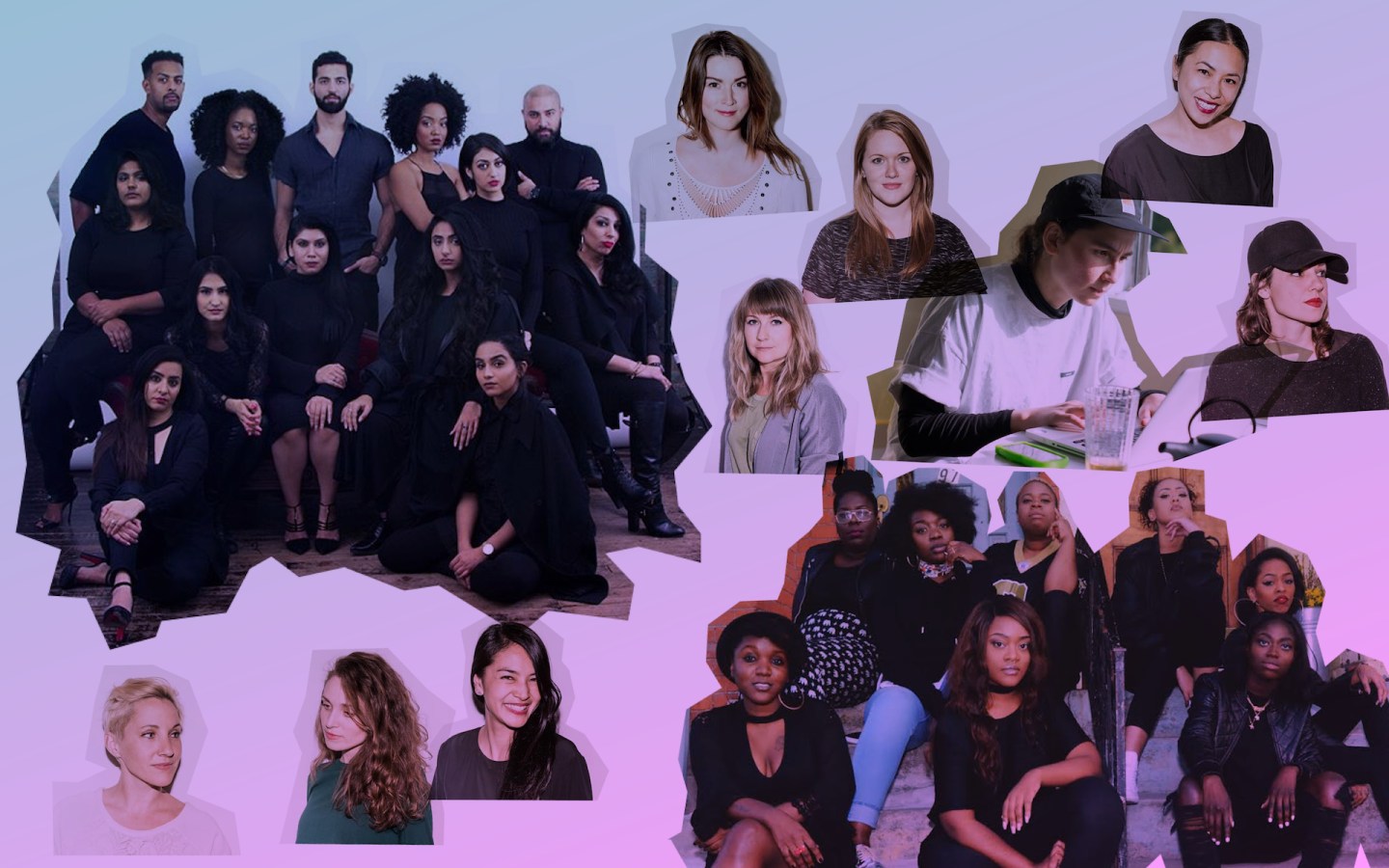 Collage by Nate Cover
Collage by Nate Cover
In a story for FADER 103, Megan Reynolds wrote about how podcasts are pivoting away from traditional hierarchies of broadcasting; she attributed the livening up of "a previously static format" to women and people of color. It makes sense that the perspectives of people who've been left out of these spaces would feel fresh—even vital—to consumers from those demographics, but especially to the mainstream.
Calls for diverse content and staff are slowly being met by existing organizations, and things are moving even slower in Canada. But it's getting easier and easier to create your own lane, and these four Canadian collectives—who just happen to be founded and run by women—are making polished DIY content that fills major cultural holes in our media landscape.
1. GYALCAST
 Kadeem Ellis
Kadeem Ellis
The Toronto-based podcasting collective is seven strong (with the help of four more rotating cast members) and three seasons deep. Music, sex, and politics are all on the table, and the hosts—representing the city's West Indian and African communities—agree and disagree in a way that brings new dimensions to the existing narratives of women's lives. Guests include local musicians and Twitter personalities, like DJ Lissa Monet, Clairmont The Second, and That Dude McFly. (Full disclosure: I was a guest on GYALCAST's first season)
GYALCAST was founded by Tika Simone, a former MTV Canada personality and emerging musician, and Sajae Elder. "We started GYALCAST because we saw a huge, undeniable gap in the way black women were being represented in Canadian media—even in urban and hip-hop media," they wrote in an e-mail. "There are some dope podcasts with black voices but the majority of them are based in the U.S." As Toronto's cultural profile rises in the global imagination, GYALCAST wanted to tell stories about life in the city: "It was important for us to talk about our music and culture, the way we see it. Traditional media has always been dominated by white men and, unfortunately, "alternative" media isn’t that much different."
Some of the more "tedious" challenges the team has pushed past include scheduling and finding a recording home. They've moved on from using donated studio spaces because of the time restrictions, and now record at Tika's home on rented audio equipment. "It’s been a learning curve for all of us that requires commitment to each other as well as our listeners." And the audience response has been overwhelming: people are tuning in to the weekly show from as far as the U.K. "We have so many male listeners despite being a female-focused show, and a big [unexpected response] has been the newfound social responsibility," they said. "A teacher in Saskatchewan used one of our episodes in her class because we touched on indigenous rights. That is a huge honor to us."
Follow GYALCAST on Twitter and listen to the season three finale featuring Combat Jack, premiering here:
2. Genero Sound
 Yuko Inoue
Yuko Inoue
Soledad Munoz is the founder of Genero Sound, a Vancouver-based electronic label and collective. The coastal city is becoming an emerging hub for new techno and club music, and Munoz found something important to confront in the scene's lack of support for women musicians—while living away from Vancouver. "[I realized] that the low number of women playing electronic music was a global systematic problem, similar to what I'd encountered growing up in the skateboarding community and later as a D.O.P in film," Munoz wrote over e-mail. "It also made me aware of the homogenization of the pre-existent sonic landscape, which lacking gender and race representation, seemed to be stuck within genres."
Since summer 2014, Genero Sound has been hosting community-engaged events and putting out digital releases of experimental sounds from artists like Stefana Fratila and Regularfantasy, and Munoz is working on pressing D. Tiffany's The Genero EP on vinyl. The goal isn't to fit in, but to make change: "The norm has to start recognizing equity in our differences. In other words, the project wants to exist as difference and instead of working to fit the already established dialogues, we want to start new ones."
Munoz notes that Genero's affiliates recognize the project's urgency and work hard to sustain it, but that ultimately it moves at its own pace, "taking as many forms as the women involved in it want it to have." She's also wary of replicating some of the narratives Genero is trying to disrupt. "As much as I care about the distribution of women's works and what it does to our collective memory, I think the conversation around/inside the project and the embodiment of sound works in our community (through live performances), need to exist together. It has been hard to stretch this fluidity while still calling it a label, and even harder to deal with the financial part of creating objects of distribution that don't perpetuate the same hegemonies it is trying to challenge."